Peppers are the fruit of plants in the genus Capsicum, which includes mild, sweet peppers and hot, spicy peppers. The common name of hot peppers is chili pepper (also spelled chile pepper and chilli pepper), whereas the milder peppers are bell peppers. Peppers are a member of the wider Solanaceae family, another name being the nightshade family.
The most popular of the peppers is the bell pepper, which comes in many different colors such as yellow, green, orange, and purple bell peppers and has a mild sweetness. Peppers can also be spicy with various levels of heat ranging from none at all to downright fiery, depending upon what sort you’re eating!
Peppers have been an integral part of the diets of many cultures across time and around the world, beginning in South America. This fruit was first domesticated as food more than 6,000 years ago in Central Mexico and evidence shows it’s been present at almost 9,500-year-old dinner tables!
The name “pepper” comes from Christopher Columbus and his first encounter with the fruit in the Caribbean. When Christopher Columbus realized that they might become a substitute for the far more costly and rare black peppercorns, he dubbed them “peppers.” Today, India is the top producer of chili peppers worldwide.
The Spicy Science of Chili Peppers
A group of compounds called pyrazines or 2-isobutyl-3-methoxypyrazines is largely responsible for the various flavors and aromas that peppers have to offer. The creation of these compounds happens in the fruit’s tissue as it matures, so chopping and chewing aren’t a requirement for pepper flavor development. Pyrazines are among the most powerful odor chemicals, with very low odor thresholds. Some of these molecules may be detected in water at parts per trillion concentrations.
The capsaicinoids in hot peppers are what make them spicier, accounting for up to 90% of their heat. The two most prevalent types are capsaicin (the type used for spice) and dihydrocapsaicin. They have similar potency, but different structures which affect the way of their absorption by your body.
Scientists have discovered that capsaicin and dihydrocapsaicin bind to the TRPV1 receptor, a pain-detecting protein in the mouth present throughout all mammals. Capsaicin causes a “chemesthetic sensation,” which refers to the unpleasant burning feeling it produces. It is not the same as taste, smell, or touch.
Drying of Chili Peppers
One method that can even make the chili pepper spicer is drying. This is a way to preserve the peppers by removing approximately 90% of the moisture. In order to safely preserve dried peppers for years, the recommendation is to keep less than 12% moisture to prevent microbial growth and spoilage. This process can cut the weight of the fruit by half which affects its spiciness. It also results in a 10-fold boost in hotness. Slowly drying them with heat can increase the rich, sweet flavor of these peppers.
You could do this by putting them in the oven or a food dehydrator for extended periods until they are nearly fully dried out. This will cause 2-methyl propanol-2, 2-methylbutanal, and 3-methylbutanal to form, giving off an additional hint at what makes up those delicious flavors you love about wild chili peppers!
Flavor Profile Description of Chili Peppers
Chilis are more than just spicy food. They have a distinct flavor that is unique to each type of chili, including bitter, lemony, citrus, floral, minerally, fruity, and acidic flavors. A variety of tasty flavors characterize chile peppers, although most have two to three and some have as many as five.
One method of processing chili peppers that is both drying and aromatic is smoking. Smoking adds another layer of complexity to the flavor profile of spicy foods made with chili pepper. In general, whole dried pods retain a greater amount of flavor than crushed ones. Chili plants are highly varied, and one chili pepper may taste significantly different from another. This is even more true for heat levels, which can differ considerably depending on the environment and other factors. Here are the flavor profile descriptions of selected chili peppers:
Peppers
#1. Bell Peppers
Bell peppers are not spicy, but their flavor is actually very unique. They add a much-needed crunchy texture and mild sweetness to all sorts of dishes.
#2. Poblano
The Poblano or green ancho chili pepper is one of the most popular of all dried chilis. This pepper can be found in many dishes across the Southern United States, Mexico, Central America, and South America. It is an addition to salsas, sauces, moles, and rice mixes as a natural flavoring. Poblano peppers have a mild spice that provides a delayed and short burn. They have a Scoville Heat Unit measurement of 1,000–2,000.
#3. Guajillo
Guajillo adds a sweet yet bold flavor to food. It’s perfect for marinades and sauces! It’s also a popular addition to burritos, tacos, enchiladas, and bean dishes. They have a medium heat level with a delayed and short burn and 2,500 to 5,000 Scoville Heat Units.
#4. Anaheim
Dried, ripe, or fresh Anaheim chilis provide a rich and full-flavored taste to meals. The chilis are dried and then either ground into a powder or soaked to make them more flavorful for cooking. This includes both hot sauce and salsa. They may also be an addition to chili recipes! Anaheim peppers are quite delicate and leave a delayed and short burn. Many individuals like to munch on them raw because they are so mild! They fall between 500 and 2,500 Scoville Heat Units.
#5. Ancho
The dark brown ancho chili is the sweetest of all dried chili peppers. It has a full body with just enough heat to give your dish personality and flavor, but it’s still milder than most other spices on this list so you can use them in any sauce or mole without worrying about spice overwhelming you!
These wild chilis are utilized to flavor salsas, dips, burritos, and tacos and are great for moles and sauces. However, the spiciness of an ancho chili pepper is roughly comparable to that of poblano peppers. They have a rating of about 1,000-1,500 Scoville Heat Units.
#6. Pasilla
Pasilla peppers are the perfect complement for any dish that needs some heat. They are naturally dark green and can be ground and sprinkled on pizza, or cut into strips to add flavor when cooking other foods like soups and casseroles! The Pasilla chilis have a slight heat level, with around 1,000 to 2,000 Scoville Heat Units. They leave an immediate and short burn in the mouth.
#7. Jalapeño
The jalapeño pepper is a staple in many dishes and beverages, adding spice to a variety of foods like salsas, guacamole, sauces, nachos, rice dishes, sandwiches, soups, or really whatever you want! They are often used for pizza toppings where they will add heat along with their unique flavor! Jalapeño peppers have Scoville Heat Units of 2,500–8,000. They produce an immediate and lasting burn on the tongue.
#8. Chipotle Morita
This earthy, fragrant pepper is made from the well-known jalapeño that has been used for centuries in Mexican dishes like tacos, fajitas, burritos, BBQ rubs, and sauces. The flavor added to these recipes ranges from mild and subtle to a noticeable spicy heat.
They are also utilized in chili tamales where your taste buds are hit with an intense burst of spice on each bite! Chipotles have a heat range of 5,000 to 10,000 Scoville Heat Units, which makes them far hotter than ancho chiles. They produce an immediate and lasting burn in the mouth.
#9. Chile de Arbol
Chile de Arbol is a type of pepper that’s hot and spicy. It has an aromatic smokey flavor with hints of cayenne, making it perfect for sauce or other cooking purposes where you want some extra spice! Chile de Arbol peppers are quite spicy, with a heat rating of 15,000–30,000 Scoville Heat Units. They also leave an immediate and lasting burn on the tongue.
#10. Habañero
The habañero pepper, of the genus capsicum and species chinense, is a delicious and versatile ingredient; dishes such as Conch fritters, Mango salsas, and Caribbean curries use them. The flavor profile of this intense, highly-prized fruit does not overwhelm other ingredients, but it does make its presence known with a smoky flavor – hot, floral, and fruity with hints of apricot, red apple, and tamarillo.
It’s about 30 to 50 times hotter than a jalapeño, but it has a distinct flavor that goes well with tropical fruits, soups, sauces, or any dish you want to spice up. Habañero chilis are one of the world’s hottest peppers, with a rating of 100,000–350,000 Scoville Heat Units. This pepper produces an immediate and lasting burn on the tongue.
#11. Naga Jolokia (Ghost Pepper)
Known as the world’s hottest chili pepper, another name for naga jolokia is the ghost pepper. You might need to think twice before you put this one in your mouth! It is not a sweet pepper at all.
The naga jolokia pepper works for extremely hot sauces and even some cooking since it’s frequent usage in curry sauces for its distinct taste. This pepper has the highest rating of 1,041,427 Scoville Heat Units, making it one of the world’s hottest chili peppers. As it produces an immediate, intense sweet chili flavor, it delivers an eye-watering, lasting burn.
#12. Carolina Reaper
If you’re looking for a fiery hot pepper, look no further than the Carolina Reaper. These peppers pack a serious punch, with an average Scoville rating approx 1.5 million units. That means they’re about 100 times hotter than a jalapeño pepper! Carolina Reapers are native to the United States, and were first cultivated in South Carolina. They get their name from their distinctive shape, which resembles a tiny skull with horns.
Product Form of Chili Peppers
At Magic Plant Farms, we carry a range of seasonings, spices, and other gourmet products made from chili peppers. Our collection has something for everyone, especially if you enjoy the flavor chili peppers in different forms. The following are some of our chili pepper products:
Hot Pepper Mash/ Puree
Turning our hot peppers into mash is one of our most popular processing methods. The chilis are crushed into a mash with visible pepper seeds and membrane fragments.
With only natural ingredients in our puree without any preservatives or additives – it’s the real deal! Our pepper puree is devoid of preservatives or additions, and it’s very smooth.
The possibilities are endless with this versatile mix. You can add salt and ferment, or pasteurize for a custom blend that is perfect to put into your dishes! You should store it in an airtight container, in a cool, dry place to preserve its quality for a longer period.
Dried Chili Pepper
Dehydration is one of our main processing methods for chilis. We can dehydrate the hot pepper to preserve the unique flavor and then concentrate both the flavor and pungency by reducing the amount of moisture in it. We can preserve the pepper’s health advantages because we slowly dry it in a low-heat air process at a slow pace.
These dried chili peppers are then finely crushed, powdered, and processed into tiny flakes of all shapes and sizes. To make one pound of dried pepper, we need 7–10 pounds of fresh peppers to ensure that not only do they taste great, but they are also healthy and safe for you!
Other Popular Chili Pepper Products
Magic Plant Farms is your one-stop shop for chili pepper perfection! On top of the dried products and pepper mash/puree, our comprehensive online shop also features:
- Chili pepper flakes
- Sriracha powder
- Carolina Reaper flakes
- Dry pepper whole pods
- Chili pepper powders
- And more!
Quality Specification of Chili Peppers
Though chili peppers come in many different varieties in their cultivated forms, they all have one thing that ties them together – heat! When you’re dealing with such strong flavors it’s important to find a supplier who can offer consistent product quality.
A reliable source will ensure your spices aren’t only hot, but also flavorful so you know exactly what their money was spent on during your first bite.
Variables such as weather, sourcing, processing techniques, and storage conditions affect the heat and flavor of chili peppers. This is why you must do your homework before selecting a supplier.
Magic Plant Farms specializes in providing the greatest possible quality spices. We ensure that our chili peppers are hand-harvested, sorted, and inspected to attain the best results. We can guarantee that our rigorous manufacturing processes consistently exceed the quality requirements of U.S. food producers under our full control. Our chili pepper products are also Kosher certified and Halal certified.
From harvesting to the packaging, you can rest assured that the whole process is conducted under hygienic conditions. The end product attributes are:
Non-Genetically Modified (Non-GMO). That means no:
- Additives
- Preservatives
- Coloring
- Silicone Dioxide
- MSG
- Gluten
Storage of Chili Peppers
Chili peppers are very perishable, so it’s important to keep them in an airtight container and out of direct sunlight. If kept above ground and away from the wall, they should stay dry. The proper storage of spices should keep their flavor and quality for up to three full years.
Magic Plant Farms
For all your chili pepper needs, look no further than Magic Plant Farms. We offer exceptional, authentic, and rare pepper products. We invite you to savor and enjoy the huge selection of our healthful and flavorful chilis with confidence. All our products are processed under strict GMP and HACCP protocols, with both internal and critical independent third-party testing.
Feel free to browse our chili pepper products and order online today!

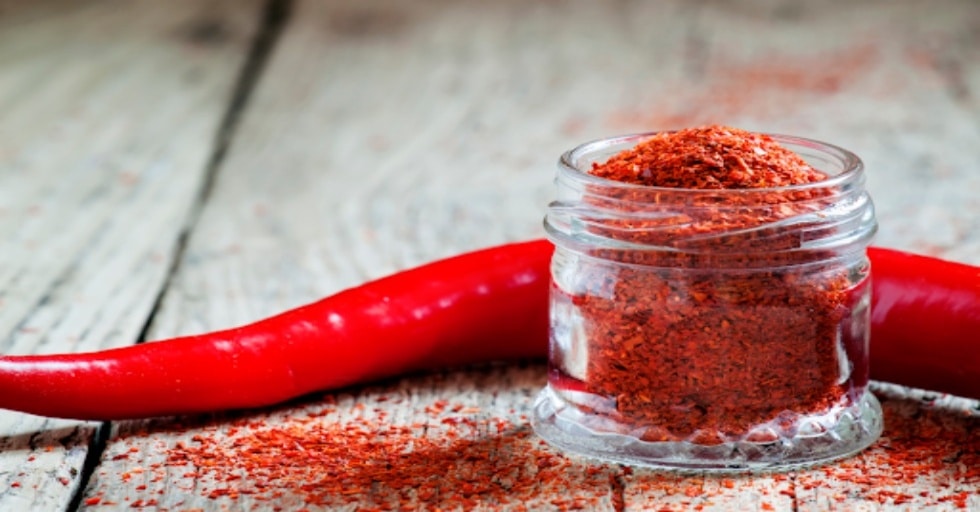
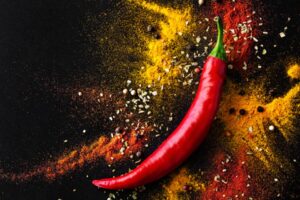
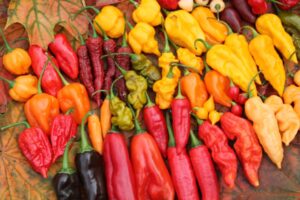
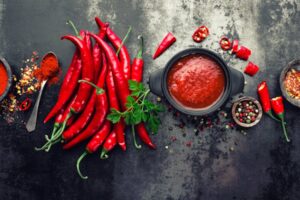
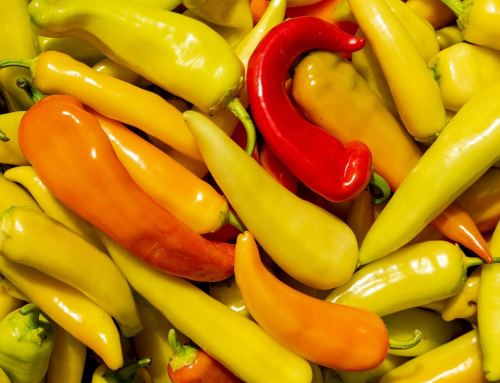
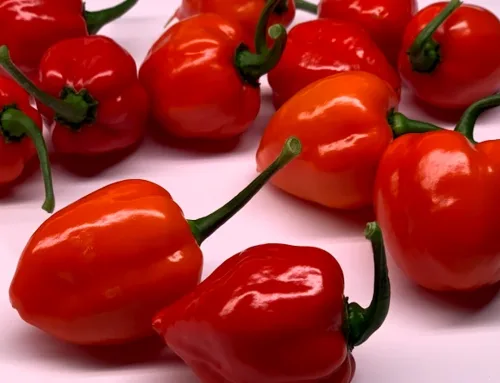
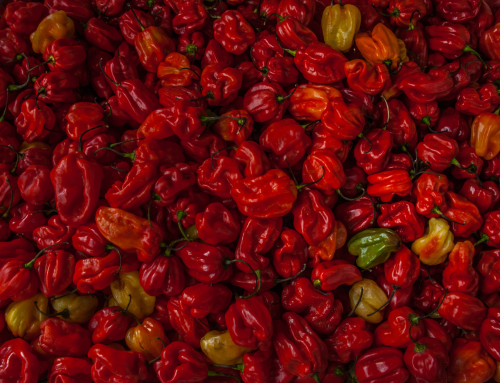
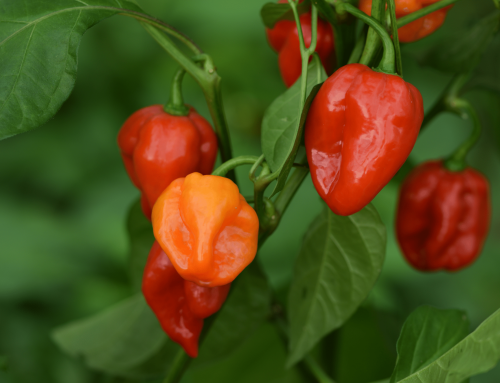
Leave A Comment